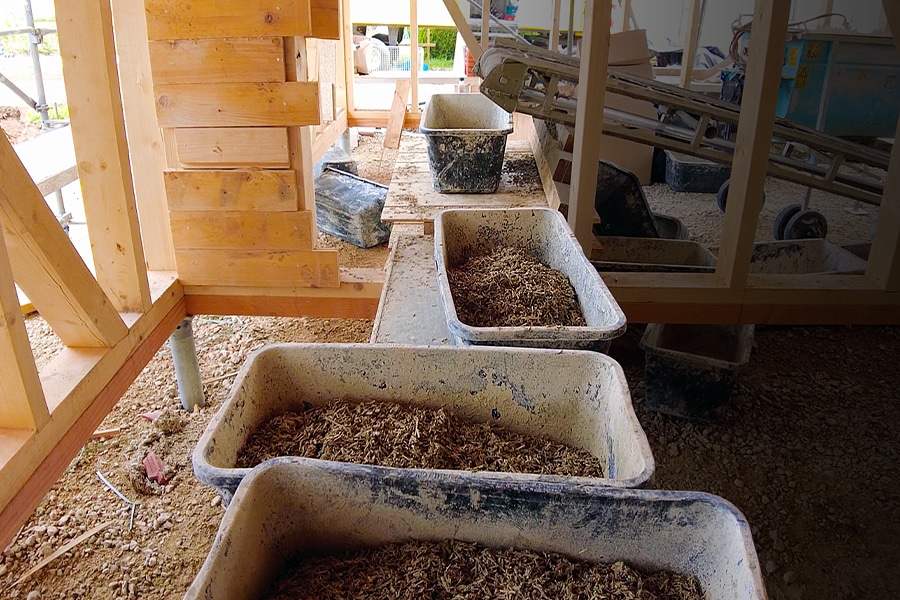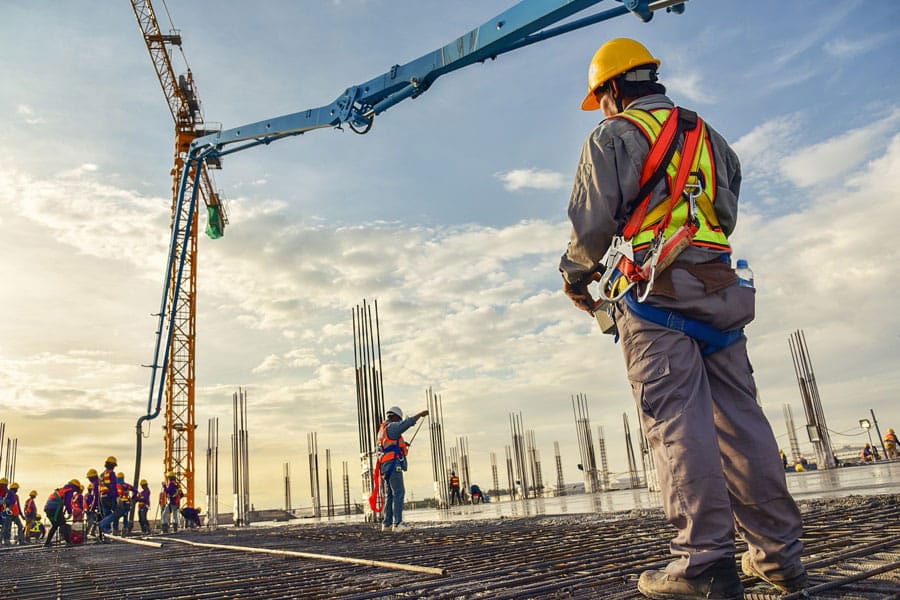The construction industry is often criticised for falling behind other sectors when it comes to harnessing technology.
Yet although it is travelling in the wake of the technology curve, construction is fully up to speed when it comes to an increasingly important aspect of delivering the buildings we need—sustainability.
According to a global survey, nearly half (47%) of respondents across the engineering and construction industries said sustainability was a priority when considering how to tackle a project.
Given the built environment’s impact on the world, not least in accounting for 25% of the UK’s annual carbon emissions, the ambition to sustainably deliver homes, commercial space, offices and infrastructure is an accepted part of industry thinking. The question is how to go about it.
Hempcrete’s Sustainability Credentials
Important considerations on construction’s sustainability checklist are the materials that go into a project, how they are extracted and produced, the effect of those processes on the climate and how such materials perform once in situ.
Steel and concrete are understandably among the most widely used components in construction, thanks to their durability and structural strength. However, their production leads to a significant amount of carbon emissions. In the case of steel, global production in 2019 resulted in 3.4 billion tonnes of CO2, between 7% and 11% of the global total, while concrete production accounts for around 8%.
While these materials will continue to be used, there is a shift toward those that are more sustainable and less polluting. Along with timber and alternatives to traditionally made bricks, another sustainable resource is hemp.
The hemp plant, a member of the cannabis sativa family, is converted into a concrete-like material by mixing the wood-like inner section of its stalk, known as hurd, with water and lime, which acts as a binding agent. When it hardens, hempcrete is light and durable, although structurally it is not as robust as traditional concrete.
Oh, and if people are concerned about succumbing to the hallucinogenic effects of occupying a building made from hemp, the industrial variety used in construction has a much lower amount of the material tetrahydrocannabinol, or THC, the compound that gets people high: 0.3% vs. 5% to 10%.
Hemp’s environmental credentials are impressive. According to a paper by Salim Barbhuiya of the Department of Engineering and Construction at the University of East London and Bibhuti Bhusan Das of the Civil Engineering Department at the National Institute of Technology Surathkal in India, it is “one of the few materials that can continue to absorb carbon after being employed in construction, storing more carbon in the atmosphere over the building’s lifetime than was emitted during construction.”
Barbhuiya and Bhusan Das point out that hemp is fast-growing, can be fully grown and harvested in as few as 60 days and “is a ‘carbon-negative:’ or ’better-than-zero-carbon‘ substance because the hemp plant absorbs more carbon from the atmosphere than it emits during its production and application on site.”
Upsides and Downsides
Hempcrete has been used in Europe for a number of years. It can provide natural, airtight insulation, can naturally regulate a building’s humidity, is fire-resistant and is ideal for regions where there is the danger of earthquakes, since it is resistant to cracking.
Yet while its green credentials are clear, there are some downsides to using hempcrete instead of the “real” variety. One disadvantage is that hempcrete has only 15% of the density of traditional concrete, while its compressive strength is just one-twentieth of residential grade concrete. This means that in many situations the use of hempcrete would need to be bolstered with supporting frames made from other materials. That, or it is used as an infill product.
Meanwhile, the cost involved in building with hempcrete is estimated to be around 10% higher than using traditional concrete. And when mixing the materials there is a risk of skin irritation, although hempcrete proponents highlight that this is due to the use of the lime and can be mitigated by using heavy duty gloves and a mask.
However, these factors should not prevent the sector from considering the use of hempcrete where possible when the conditions allow, particularly as the impact of the burgeoning climate crisis becomes clearer.
Hempcrete’s Long-Term Potential
In a paper titled “Opportunities & challenges of hempcrete as a building material for construction: An overview’, researchers Madhura Yadav and Ayushi Saini argue hemp’s ability to grow quickly and require little in the way of water to promote its development means it could be an ideal material for parts of the world where water resources are at a minimum; for example, those that regularly experience periods of drought.
Meanwhile, the findings of another study, ‘The potential of hemp buildings in different climates: A comparison between a common passive house and the hempcrete building system,’ by researchers at Uppsala University suggest that hempcrete buildings also perform well in warmer climates.
“The high thermal inertia and moisture buffering effects of the material help stabilise the temperatures and indoor humidity levels.
“The low effusivity (sic) also lowers the surface heat transmission which gives a feeling of warmth in proximity to the walls and potential toxic emission from the materials are practically zero due to their natural composition,” it added.
Clearly, hempcrete is unlikely to usurp traditional concrete anytime soon. But its potential is one more step toward a more sustainable construction sector, and for that reason it is worth consideration.















